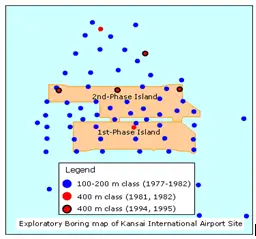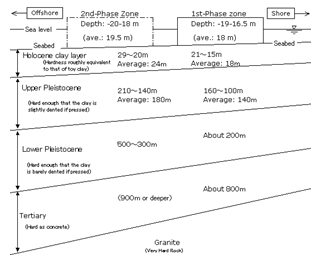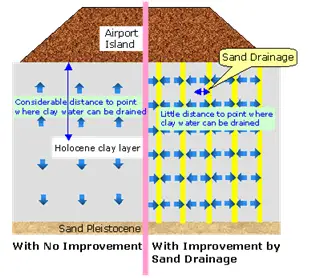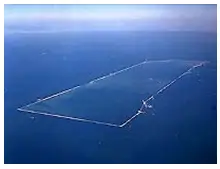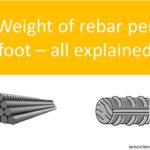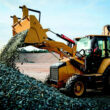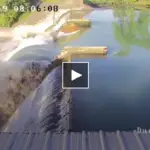Now You can Land Airplanes in the Sea – Kansai International Airport Japan
Japan, the land of rising sun was advancing with technology at a fast rate after World War II, Its economy was on the verge of stabilization. But here the question arises where do you put a plane in a space that run out of space? The Japanese have found its answer you can make the airplane to as well as it flies. In Japan at that time the largest international airport was in Tokyo; the middle of the island. Business owners had to ship their goods hundreds of miles so they could be exported out of the country. This was both costly and time – consuming.
Osaka was the ancient capital of Japan and the former playground for the last samurai. The home of 3 millions Japanese, a new energy in Osaka has propelled this place to become the commercial and industrial center of western Japan. But in order to compete with their big sister Tokyo – Osaka needed to find a way to bring in more people with a Yen for Big business. The solution that was devised “a much bigger airport – to open up the skies”
Building an international airport in Kansai region of Japan was developed in late 1960’s, but the owners of the land and angry farmers were opposing the idea and thus the idea of the project was forced to shut down. The Kansai region included the large cities of Kobe and Osaka, advancement in these two cities forced the city designers to find a solution as to where to put an airport. The majority of land in Kansai region is being filled by the inhabitants and the only practical solution to this problem was to build it on water.
First and foremost important step related to any geotechnical application is to gather information about the soil as much as we can. For a task the scale of Kansai, an extensive investigation was necessary to characterize the subsurface since very little was known about the soil conditions below the bay,
Fig 1 Bore Holes for Geo-tech investigation
Scientists have used large barrages and rigs, to let engineers to be able to bore deep into the seabed and gather information about the type of soil they would be resting their airport on. The findings of the geotechnical investigation was as under; the top 60 feet of the clay was soft-alluvial clay called Holocene layer which has hardness roughly equivalent to that of toy clay, this layer had loosely placed sediment. But that was not much problem for the engineers as they had much experience in building on such similar deposits off the shore of the bay and had means to control it. The problem which they had about to face was below that alluvial clay layer was old, diluvial deposit of stiff clay, which had never been build on before.
Fig. 2 Subsurface profile of the Kansai Airport Foundation
Engineers have divided the main construction into three different stages
(i) Remediation of the seabed
(ii) Placement of seawall
(iii) fill
The problem that was faced by geo-tech engineers here was settlement, as the underlying soil was clay. As we know that clay composed of very small soil particles having pores in them, these pores on application of load can be re-arranged for an unknown time, and more over this process of consolidation is very slow, but has a significant effect on the working of the structure.
In the case of the Kansai Airport, the upper alluvial layer was highly compressible and is impermeable as well, thus engineers have used a technique called sand draining method, approximately one million sand columns were inserted into the top layer of the bay to improve drainage conditions. This allows the water to flow horizontally to a column and then exit relatively quickly in a vertical direction because the sand has high permeability. The sand columns not only allows the water to drain quickly to avoid long term settlement but also strengthens the soil during construction.
Fig 3 : Sand Draining Technique to Increase settlement Rate of consolidating clays
After improving the sub-surface of the bay the scientists have to fight with the high speed tides of the sea, because if these high velocity waves can’t let the inhabitants to live near the sea how can these waves allow the airplanes to live within the sea; for fighting this problem they have devised a seawall, special “tripod” blocks were used on the seaward side to disspiate the energy of any harsh waves. These 2 ton blocks slowly arose from the seabed creating a ring of concrete 40 ft above sea level.
Fig 4: typical cross-section of the seawall
Fig 5 : Complete seawall
Once the seawall was completed, workers started on the body of the island, The source of their fill material, which consists of different grades of sand, gravel and rock, was from three nearby mountains. Trucks transported from the borrow site to the nearby ships which shipped it three miles to the site. It almost took four years to fill such a land and it took 750 million cubic feet of fill, three mountaintops had disappeared.
To tackle with the problem of settlement, the first question that was put forward to the scientists was How much the island would ultimately settle. By using their knowledge of soil mechanics they have calculated the ultimate settlement of the soil to be between 19 and 25 feet. Interestingly enough, the airport was designed for an island that would settle only 19 feet. By the time the island was completed in 1990, it had already settled 27 feet and was continuing at a rate of 2 inches per month. This prompted designers to put an extra ten feet of fill on top to compensate for the difference, adding even more stress to the seabed.
The deep clay layer was not a uniform or homogeneous layer, it has sand layers within its mass and engineers believed that these sand layers will allow the water to drain quickly themselves but care full study shows that among these continuous sand layers there are a few discontinuous sand layers which doesn’t allow the water to drain and thus there comes the problem of differential settlement.
To encounter the differential settlement between island and the terminal, engineers have lined the basement of the terminal with a quarter of a million tons of iron ore. Without iron ore, the terminal weight would be less and the remaining island would sink and settles thus the terminal might fail thus the additional weight of the iron ore beneath the terminal allows the terminal to settle at approximately the same rate as the rest of the island.
The runways were paved specifically with asphalt and not the concrete reason being that if some patch holes appears they could be paved easily with asphalt and concrete could fail in this case easily. The terminal was build on 900 columns, the height of these columns was controlled by a hydraulic jack and the settlement of these columns was computer monitored thus if some differential settlement might be observed the hydraulic jacks come in place to counter that settlement. Once the jacks were removed steel plates were slid under the columns.
Engineers have used rocks when they were filling within the seawalls as a fill, inclusion of these rocks had some objective and that was to absorb any earthquake shaking activity and that was proved fruitful in the 1995 earthquake when after 15 years the terminal was opened an earthquake rocked the Osaka Bay area in early morning. Kansai Airport was just 18 miles from the epicenter and the officials were surprised to see the results of minimal damage to the island. With the exception of a few cracks within the sidewalks the terminal was fully in perfect condition.
· Kansai International Airport Land Development Company, Kald Information Center: URL: < http://www.kald.co.jp/index-e.html>
· Takenaka Corporation, Modification Method for Differential Settlement: URL: <http://www.takenaka.co.jp/takenaka_e/quake_e/fudo/fudo.htm>
· Kansai International Airport “Mega Structure” Series on National Geographic Channel.

